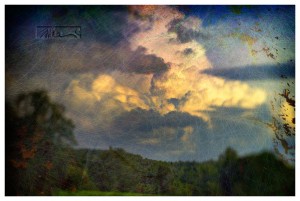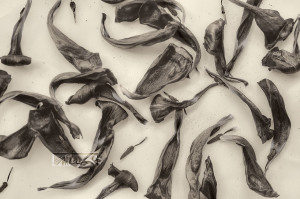Some photographers tell me that they take photographs in order to make order out of chaos.
Why would they say that?
If in reality nature is chaotic then any image that attempts to show it otherwise is a false image of the real world. The photograph of the world does not change the chaos. It doesn’t change the nature of the world or the reality of the universe. It does not change the actuality of how the real world acts. Rather, it produces an imaginary representation that does not naturally exist in nature.
To me, creating order from chaos would be like making everything exactly the same. It implies that the natural world is not good enough or interesting enough. To create order out of chaos seems to suggest that every tree needs to look like every other tree and every face like every other face. Which would imply that every image needs to look like every other image.
Yes, there seems to be a certain amount of order in the universe. Of course, the world is full of similar things, but all those similar things contain a certain degree of variation.
If the world was full of perfectly consistent things, the world would be much less dynamic, a lot less spirited, and far less intriguing Even within all the various categories of things, It would be difficult to impossible to tell one single thing from another. The world would be bland and boring. Photography would likely be dreadfully dull.
It is the chaos that makes this world interesting. While our world has sameness within structures and living organisms, those similarities are apparently never exactly alike. Even the things we think of as ordered in the world are subject to the chaotic rhythms of motion, scale, and time. They were born out of chaos and change with the wind, the waves, the seasons, time, light, and other forces of nature. Everything that lives does so in a continuous fight for survival.
Even fractals are chaotic. While difficult to imagine, no two snowflakes are exactly the same. Fractals are repeated chaotic patterns that form the infinite shapes of much of the world’s design.
The structures of bee’s wings, tree leaves, flower petals, fish scales, blades of grass, and waves on the water are among the things that we might think of as ordered. Yet, those things become chaotic in the scheme of the entire environment when they scatter, change, and evolve. While the basic structures are similar, the individual remains at the very least slightly different.
Our world is in constant motion. It is in constant flux. All the things that seem to be the same are only the same for an instant in the scheme of the universe and the scheme of time.
Everything is moving around everything else. The planet is moving at an incredible speed through ever-expanding space. Every creature is its own entity, which is constantly moving with life and breath.
Personally, I find all of the chaos to be extremely fascinating. I am in awe of the natural state of the world and the universe. It is what I find exciting. Diversity is what makes the world more picturesque, more beautiful, and more fascinating. Variation is the thing that allows us all to see the world in fresh new ways from our own vantage point and with a variety of perspectives. Variety is what allows the world to be fresh and new as we move from moment-to-moment, day-to-day, and place-to-place. It is what gives our eyes pleasure and keeps our senses aroused.
Perhaps those photographers actually mean – to make sense of it all (chaos). But that would imply perhaps looking at the world for what it is.
I would say that I photograph chaos so that I can see life more clearly.
NOTICE of Copyright: THIS POSTING AS WELL AS ALL PHOTOGRAPHS, GALLERY IMAGES, AND ILLUSTRATIONS ARE COPYRIGHT © JOHN NEEL AND ARE NOT TO BE USED FOR ANY PURPOSE WITHOUT WRITTEN CONSENT FROM THE WRITER, THE PHOTOGRAPHER AND/OR lensgarden.com. THE IDEAS EXPRESSED ARE THE PROPERTY OF THE PHOTOGRAPHER AND THE AUTHOR.



